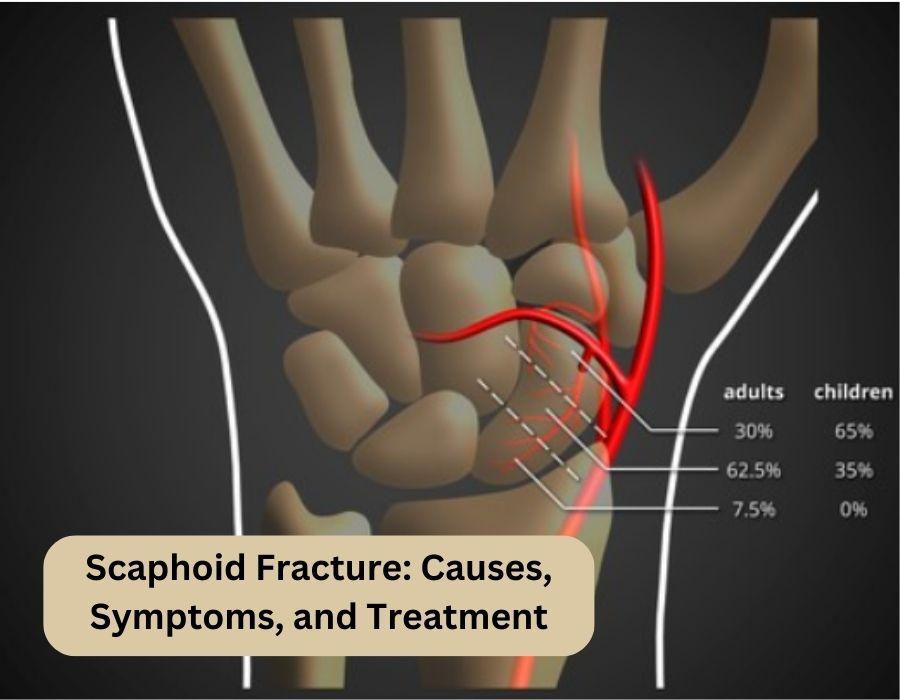The human wrist is a complex structure made up of several small bones that work in harmony to provide stability and flexibility to our hands. One of these crucial bones is the scaphoid. A scaphoid fracture is a common injury that can have serious consequences if not properly diagnosed and treated. In this blog, we will delve into the causes, symptoms, and treatment options for scaphoid fractures.
Anatomy of the Scaphoid
The scaphoid is a boat-shaped bone located near the base of the thumb, on the thumb side of the wrist. It plays a vital role in wrist movement and stability. Due to its location and function, it is susceptible to fractures, especially in cases of falls or accidents where the wrist is impacted.
Causes of Scaphoid Fracture
Scaphoid fractures most commonly occur as a result of a fall onto an outstretched hand. The force of the fall is transmitted through the palm, causing the scaphoid to bear the brunt of the impact. This can lead to the bone breaking or fracturing. Sports injuries and car accidents are also common causes of scaphoid fractures.
Symptoms of Scaphoid Fracture
Identifying a scaphoid fracture can be challenging because the symptoms can be subtle, and the pain may not be immediately severe. Common symptoms of a scaphoid fracture include:
- Pain in the wrist: The pain is often located in the thumb side of the wrist and may worsen with movement or when pressure is applied.
- Swelling: The wrist may become swollen and tender.
- Limited range of motion: You may experience difficulty moving your wrist or gripping objects.
- Bruising: Bruising around the wrist may develop, especially if the injury is the result of trauma.
- Weakness: Weakness in the hand or a feeling of instability in the wrist may be noticed.
Diagnosis
Due to the subtlety of the symptoms, diagnosing a scaphoid fracture can be challenging. It may not be immediately visible on standard X-rays. In such cases, your doctor may order additional imaging tests, such as a CT scan or an MRI, to confirm the fracture.
Treatment Options
Prompt and appropriate treatment is essential for a scaphoid fracture to ensure proper healing and prevent long-term complications. Treatment options may include:
- Immobilization: A splint or cast may be applied to immobilize the wrist and allow the bone to heal. This usually takes several weeks.
- Surgery: In some cases, especially if the fracture is displaced or not healing properly, surgical intervention may be necessary. During surgery, the bone fragments are realigned and fixed with screws or pins.
- Rehabilitation: After the cast is removed or post-surgery, physical therapy, and rehabilitation exercises may be prescribed to restore strength and range of motion to the wrist.
Conclusion
In conclusion, a scaphoid fracture is a common wrist injury that can have significant consequences if not properly diagnosed and treated. If you suspect a scaphoid fracture or experience any of the symptoms mentioned above, it’s essential to seek medical attention promptly.
For residents of Kothrud, Pune, Dr. Chaitanya Karande, a renowned Hand Surgeon, specializes in the treatment of scaphoid fractures and various other hand and wrist conditions. With his expertise and commitment to patient care, Dr. Chaitanya Karande can provide the necessary guidance and treatment to ensure a smooth and successful recovery from a scaphoid fracture or any other hand-related ailment. Don’t hesitate to reach out to Dr. Chaitanya Karande for comprehensive care and a return to optimal hand and wrist function. Your hands are essential, and Dr. Chaitanya Karande is here to help you preserve your health and mobility.





